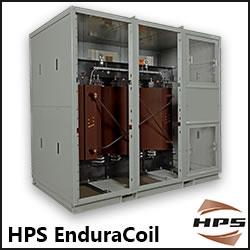Future Home Area Networks Will Allow Customized Energy Use
"We believe that in an era of rising energy costs the Home Area Network model - and its most sophisticated outgrowth, the Energy Management System - will eventually see wide deployment," says ABI Research senior analyst Sam Lucero.
SCOTTSDALE, Ariz. - July 8, 2008 -
"We believe that in an era of rising energy costs the Home Area Network model - and its most sophisticated outgrowth, the Energy Management System - will eventually see wide deployment," says ABI Research senior analyst Sam Lucero.
The HAN is an extension of smart metering intelligence into the home itself, connecting the meter to "load centers": major power-consuming devices such as "smart thermostats," air conditioners, and washer/dryers. While a few utilities today manage peak demand by directly capping these load centers' usage, a HAN system would allow the homeowner to specify a mix of consumption and efficiency across a range of devices.
Four technologies have potential here: three wireless standards, ZigBee and Z-Wave (both already used for home automation) and the new 6loWPAN; and HomePlug Command and Control (HPCC), which communicates data over the building's electrical wiring.
"ZigBee is seen as the most likely candidate for HAN success." says Lucero, "It enjoys wide support from utilities. The ZigBee Alliance has been very focused on smart metering."
Z-Wave also has support in the home automation market, especially in North America and Europe. Lucero terms 6loWPAN the "dark horse." Technically it has much to recommend it, but is quite new and relatively untried. HPCC offers the advantage of using the same power lines that feed the load centers themselves, but is thus restricted to serving wired devices only.
"HANs are deployed in only small numbers today," Lucero concludes, "but most utilities have plans in this direction, and we expect a large incremental ramp-up: first smart meters with HAN capabilities, then the addition of one or more load centers, and finally the Energy Management System."
ABI Research's recent report, "Advanced Metering Infrastructure (AMI)" analyzes the market opportunity for smart metering, including the important subset of this market termed home area networking (HAN) on a worldwide basis, providing five-year forecasts for the components and elements of smart metering and HAN infrastructure.
It is a component of three ABI Research Services: Emerging Technologies, Home Networking, and M2M.
ABI Research is a leading market research firm focused on the impact of emerging technologies on global consumer and business markets. Utilizing a unique blend of market intelligence, primary research, and expert assessment from its worldwide team of industry analysts, ABI Research assists hundreds of clients each year with their strategic growth initiatives. For information, visit www.abiresearch.com, or call +1.516.624.2500.
Featured Product

HPS EnduraCoilTM Cast Resin Medium Voltage Transformer
HPS EnduraCoil is a high-performance cast resin transformer designed for many demanding and diverse applications while minimizing both installation and maintenance costs. Coils are formed with mineral-filled epoxy, reinforced with fiberglass and cast to provide complete void-free resin impregnation throughout the entire insulation system. HPS EnduraCoil complies with the new NRCan 2019 and DOE 2016 efficiency regulations and is approved by both UL and CSA standards. It is also seismic qualified per IBC 2012/ASCE 7-10/CBC 2013. Cast resin transformers are self-extinguishing in the unlikely event of fire, environmentally friendly and offer greater resistance to short circuits. HPS also offers wide range of accessories for transformer protection and monitoring requirements.
